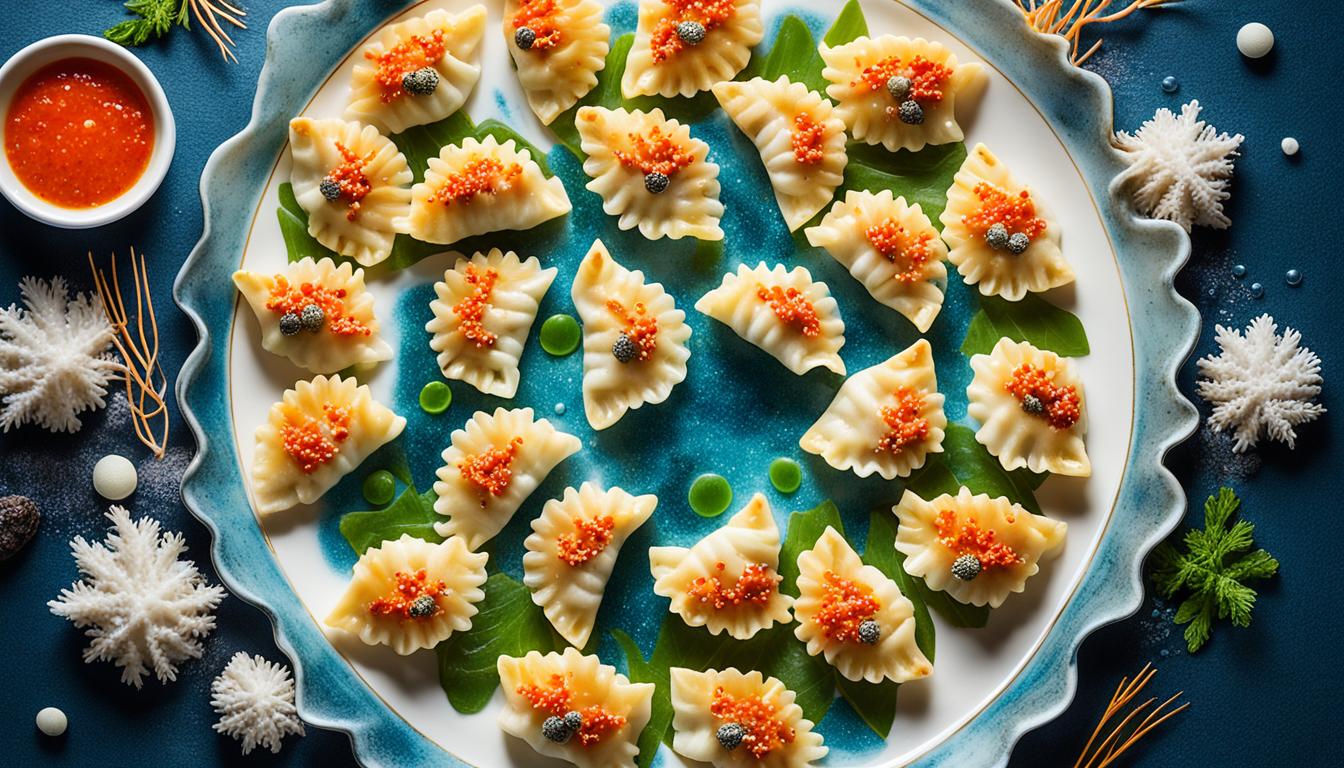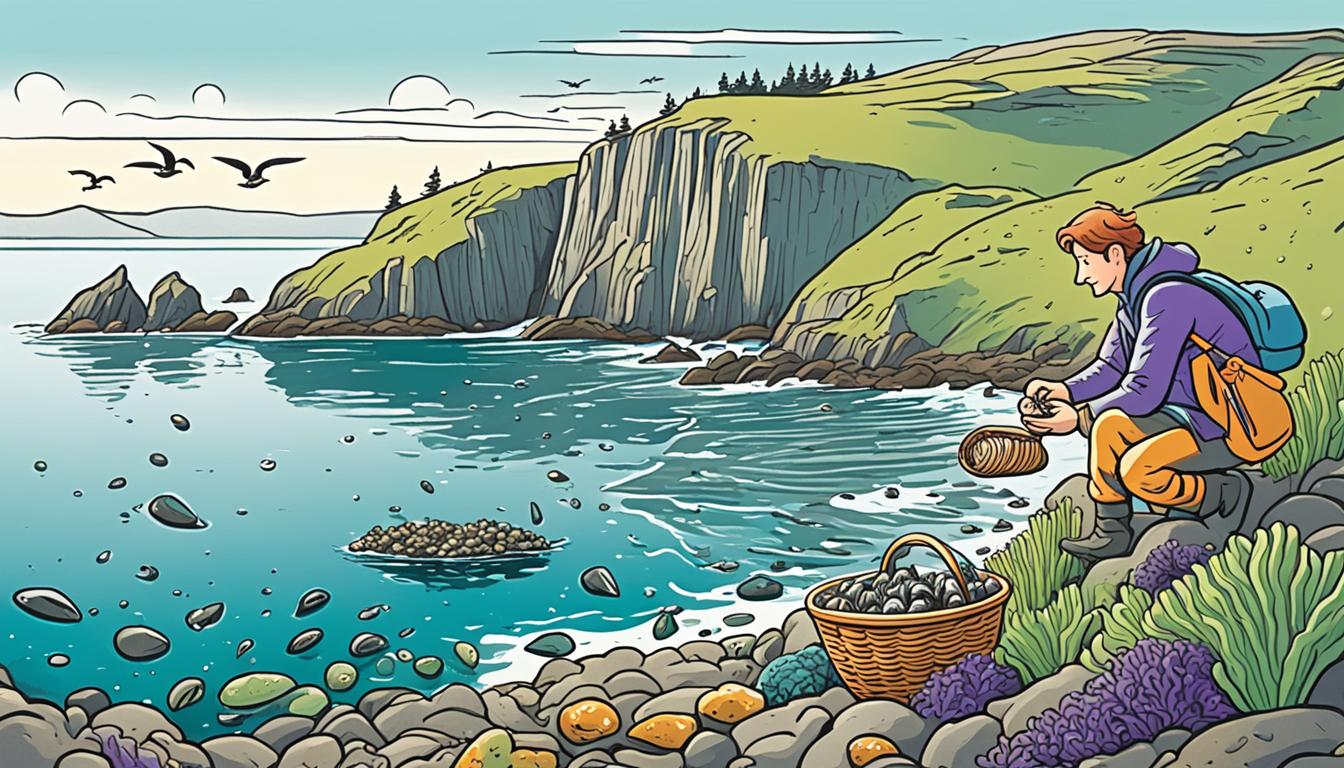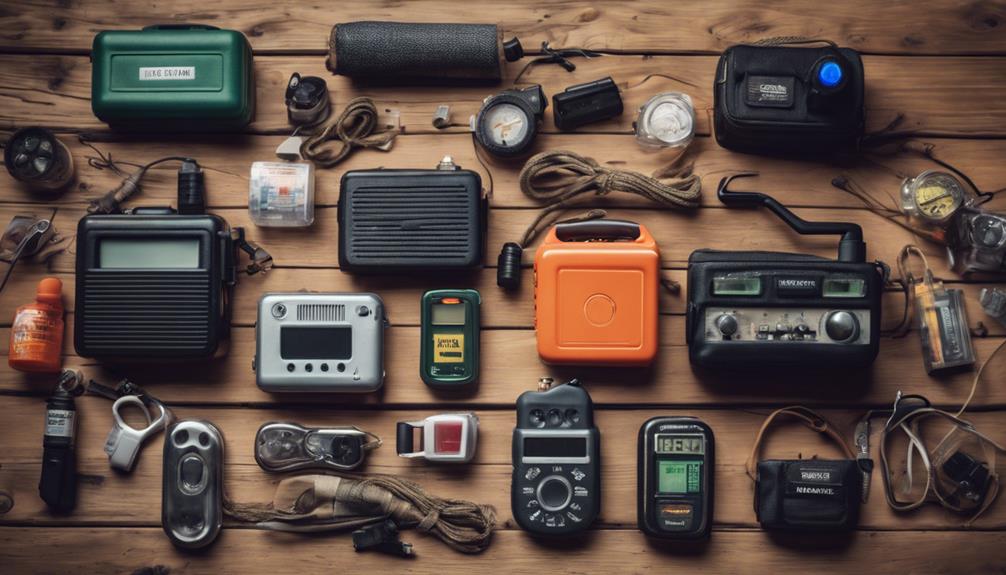In coastal regions, foraging for sea snails and percebes is a rich tradition passed down through generations. You’ll find locals using specific techniques like hand-harvesting and careful scraping that connect them to their environment. These practices are more than food—they symbolize resilience, community, and respect for nature. Each region has its own customs, reflecting unique cultural identities. Keep exploring, and you’ll uncover the deep stories behind these centuries-old coastal traditions.
Key Takeaways
- Regional foraging traditions reflect local environments and cultural identities, emphasizing community bonds and ancestral knowledge.
- Techniques for harvesting sea snails and percebes are practiced carefully, prioritizing sustainability and environmental respect.
- Gathering practices are often communal, reinforcing social cohesion and passing down skills across generations.
- Percebes and sea snails hold cultural and symbolic significance in local festivals, cuisine, and rituals.
- Sustainable harvesting methods ensure ecological balance, embodying a deep respect for the sea and marine ecosystems.

Across the world, communities have developed unique foraging traditions that reflect their local environments and cultural identities. When it comes to sea snails and percebes, these traditions reveal a deep connection between people and the ocean, shaped by generations of experience. You might find that harvesting techniques for these shellfish are often passed down through families, with each community honing methods suited to their specific coastline and resources. For sea snails, such as periwinkles, you could be using hand-collecting methods along rocky shores, gently prying them from crevices with small knives or brushes. In some regions, people gather them at low tide, carefully selecting those that are mature and free of damage, ensuring sustainability. Percebes, or goose barnacles, require more specialized techniques; you may need to use ropes and boats to reach the rugged outcrops where they cling tightly to rocks in turbulent waters. Climbing and scraping them off requires skill and strength, often performed with tools crafted for precision. These harvesting techniques are not just practical; they embody a cultural significance rooted in local history and social identity. In many coastal communities, foraging for sea snails and percebes is a communal activity, fostering bonds and passing knowledge from one generation to the next. The act of gathering these shellfish isn’t merely about sustenance—it’s about preserving a way of life. The way communities approach this task reflects their respect for the sea’s bounty and their understanding of sustainable harvesting practices. For example, some traditions emphasize only collecting a certain number of percebes to allow for replenishment, demonstrating an awareness of ecological balance. Additionally, these foraging practices often incorporate sustainable harvesting principles to protect marine ecosystems for future generations. The cultural significance extends beyond the act itself; these shellfish often hold symbolic value, appearing in local dishes, festivals, and rituals that celebrate the sea’s gifts. In regions like Galicia or the Basque Country, eating percebes is more than cuisine—it’s a cultural declaration, a testament to resilience and deep-seated traditions. Similarly, gathering sea snails can be a ritual that ties families to their ancestors and the land they’ve long depended on. These traditions serve to reinforce community identity, connecting people through shared knowledge and respect for nature’s cycles. As you participate in or observe these practices, you gain insight into how local histories and environments shape foraging customs, turning simple harvesting into a meaningful cultural act that sustains both the body and the spirit.
Frequently Asked Questions
What Are the Most Sustainable Harvesting Methods for Sea Snails?
To guarantee sustainable harvesting of sea snails, you should use selective methods like hand gathering or setting traps that target specific species. Avoid destructive practices that damage the environment. Focus on bycatch reduction by carefully monitoring your catch and using gear that minimizes accidental capture of non-target species. These methods help maintain healthy populations, protect ecosystems, and promote long-term sustainability while allowing you to enjoy sea snails responsibly.
How Do Coastal Laws Regulate Percebes Collection?
Coastal laws regulate percebes collection through licensing requirements and seasonal restrictions. You need to obtain the proper license before harvesting percebes, ensuring sustainable practices and legal compliance. During peak breeding seasons, collection is often restricted or prohibited to protect populations. These regulations help maintain balance in coastal ecosystems, preventing overharvesting. By following licensing rules and seasonal restrictions, you contribute to the sustainable management of percebes and preserve regional foraging traditions.
Are There Health Risks Associated With Foraging Sea Snails?
You should be aware of potential health risks when foraging sea snails. Toxicity concerns arise if you consume contaminated or improperly cooked shellfish, which can cause food poisoning. Parasite risks are also present if the snails aren’t sourced from clean waters or prepared correctly. To stay safe, always identify species properly, follow local regulations, and cook shellfish thoroughly to minimize these risks.
What Are Traditional Recipes Using Sea Snails and Percebes?
You can enjoy traditional recipes like hearty sea snail stews, where you simmer the snails with garlic, herbs, and white wine for rich flavor. Percebes are often served as tapas, lightly boiled and seasoned with sea salt, lemon, or olive oil to highlight their fresh taste. These dishes celebrate regional foraging traditions, allowing you to savor the ocean’s bounty in simple, authentic preparations that highlight the unique flavors of sea snails and percebes.
How Do Local Communities Preserve Foraging Traditions?
Did you know that over 60% of coastal communities keep their foraging traditions alive? You can do this through cultural preservation efforts like teaching artisanal techniques to younger generations and maintaining local markets. Participating in festivals and sharing traditional recipes also helps, ensuring these practices stay vibrant and authentic. By actively engaging in these methods, you help preserve the rich heritage of foraging and keep regional culinary traditions thriving.
Conclusion
So, savor the soulful symphony of sea snails and percebes, as you embrace age-old, authentic appetites. Let the lively lore of local legends lure you into lush, luscious landscapes of tradition. Dive deep, discover delight, and delight in the daring dance of daring dishes. With every bite, you become part of a passionate, preserved practice, pulsating with the pure power of regional recipes. Revel in the rich, rustic romance of foraging’s timeless thrill.










